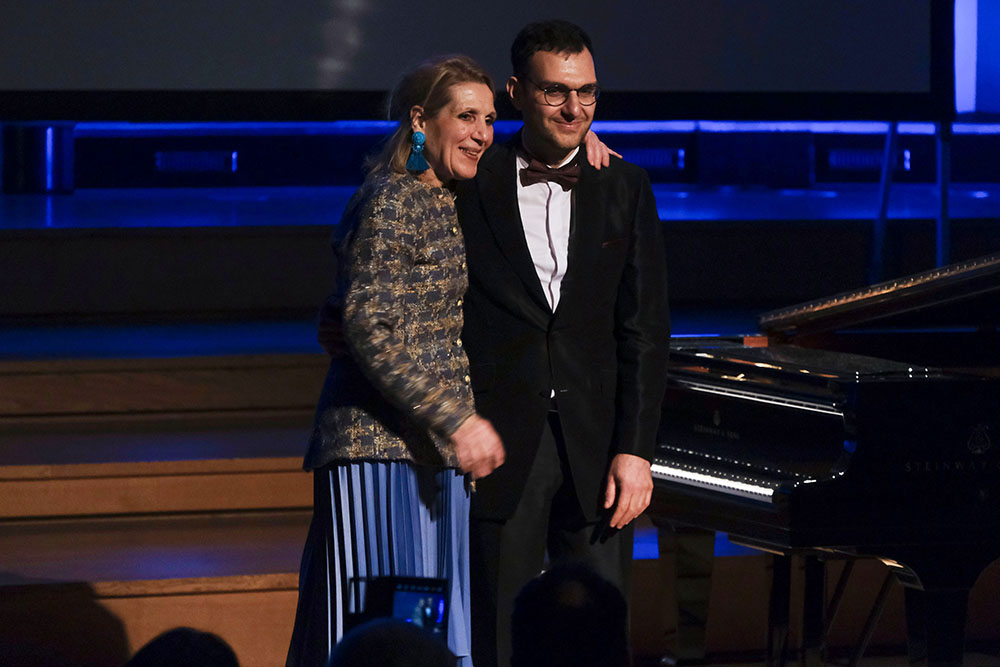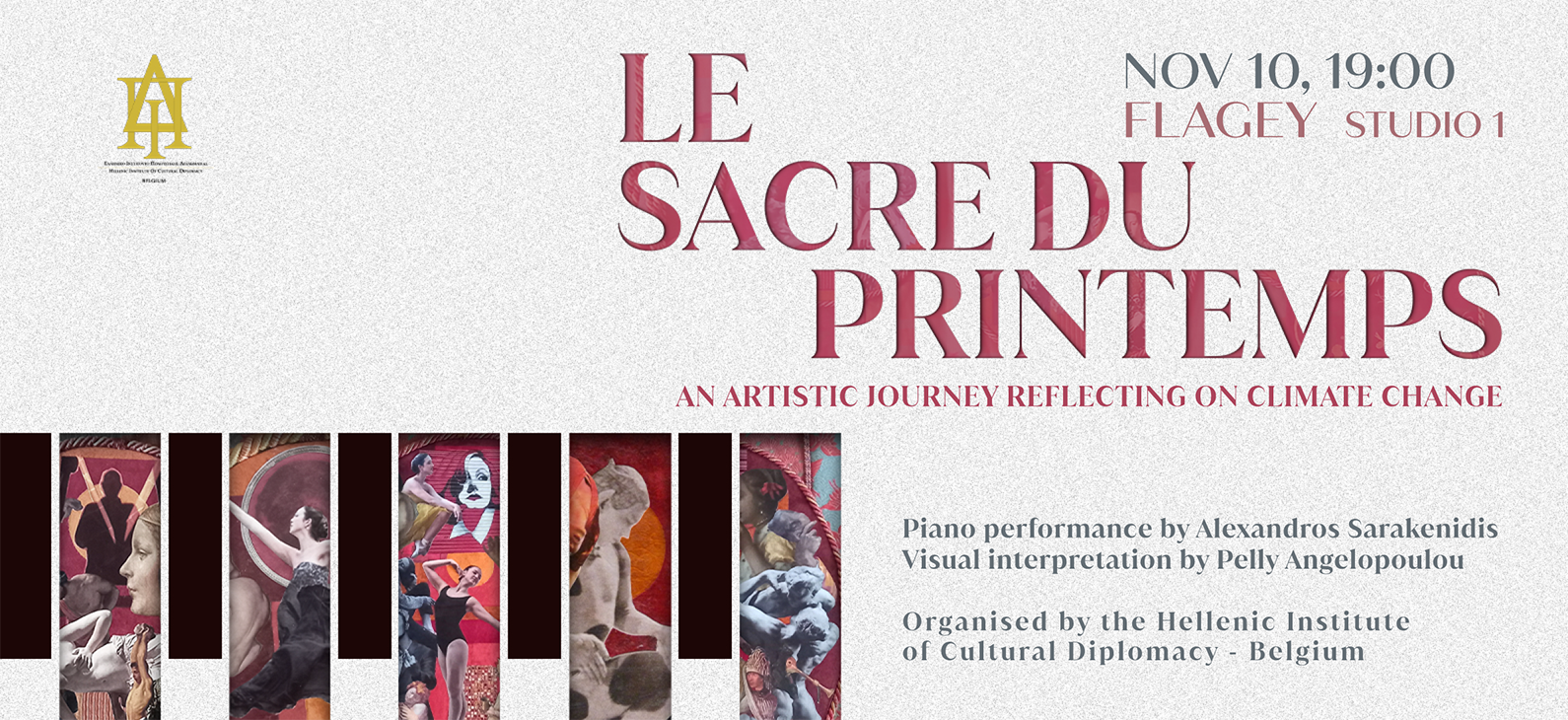
In the Magritte's museum in Brussels we have the pleasure to see among others a series of paintings created while Magritte was staying in Paris between 1927 and 1930. These paintings are called “peintures-mots or “tableaux alphabets”, “word paintings”. Many attempts have been made to approach Magritte's symbolic language and explore his intentions. However, Magritte rejected every attempt to put light on his work and claimed that it was nothing hidden between his paintings' surface, no symbolic signification. He wanted to show a kind of an impasse- a mysterious darkness that cannot be analysed or explained.
Magritte's correspondence collected by Andre Blavier (1979), illuminates to a certain degree Magritte's intentions. In a text dated in 1967, year of his death, Magritte opens a small window on his art project. “I conceive painting as the art of juxtaposing colours in such a way that their aspect is vanishing in order to visibly let the appearance of a poetic image. This image is the entire description of a thought that unites, in an order that is not unimportant, the familiar figures of the visible: skies, people, trees, mountains, furniture, stars, solid materials, inscriptions, etc. This efficient order is imagined, but not unreal. The reality of the poetic image is the reality of the universe. The images that I paint show nothing else than the figures of the visible, but in an order that responds to the interest that we naturally experience for the unknown. The invisible has an inestimable worth, but painting is absolutely inappropriate to represent the invisible, for example: pleasure and pain, knowledge and ignorance, voice and silence, what light cannot make clear. The poetic images are not tangible. Consequently, they do not hide anything. In particular, they do not hide any symbolic signification. The inanity of symbols in painting being obvious, symbols have no relation to poetic reality. I name the best possible, with titles, the images that I paint” (Blavier 1979: 687).
Taking into consideration Les Écrits, Magritte wanted to create an image poetry. According to Peirce's semiotics that impasse wasn't perceived by the painter as an end itself. Magritte wanted to return to the pre-semiotic experience, break the system of intelligence consisted of habits that make us live and act in a world where objects are already described with a certain linguistic system. Magritte's intention was to separate aisthésis from semiosis and the established relationship between objects and images and between words and things. The shock that is caused to the spectator favours the suspension of the sign. The painter reflects Ferdinard de Sassure's structuralism, that the signifier (a drawing, a word, a photo, the material representation of a linguistic sign) has a constructed connection with the signified (a concept, object, idea) and that means that this connection is arbitrary, thus there is no natural correlation between the signifier and the signified. Magritte claims that “an object is not so attached to its name that we cannot find another that suits it better.” Moreover, Magritte dares to suggest, that the image of something isn't connected with the real object, that the iconic sign is also arbitrary. Also, a real object serves a utility purpose, but a word or an image of an object does not. Nobody has ever succeeded in smoking one of Magritte's pipes!
Looking at Magritte's L'usage de la parole we can observe the depiction of one of his maxims “sometimes the written names in a painting describe precise things, while images describe vague things”, furthermore, “sometimes the name of an object can take the place of an image”. Magritte plays with the explorative curiosity of a child, that surrealist naïveté with words and images, (even the words that accompany images are often written in a stylized elementary school manner), but this game that he plays is a serious one. He provokes the spectator to think critically and transform one's vision to the world. In that painting he leaves blank spots to be filled with appropriate objects in the spectator's imagination. What does a canon have to do on a woman's head? He doesn't only emphasize the arbitrary linguistic and iconic sings, but also the connection between objects. Objects can also have no connection between one another. All in all, Magritte strategically plays with his style and artistic manners to blink an eye to the spectator, to show that in this universe every possibility is open.
Dimitra Kournianou
Trainee HICDB

Magritte, L’Usage de la parole, 1927/29
Magritte Museum in Brussels
Bibliography:
- 1.Sémiotique du système des objets dans la poétique de Magritte. La durée poignardée entre aisthésis et semiosis, Bernard Darras 2008-2009
- 2."René Magritte: From arbitrary signs to elective affinities. Painting against the imaginary bounds of the imagination." Klaus Speidel, University of Applied Arts Vienna, January 2017.
- 3.The essential René Magritte by Todd Alden, The Wonderland Press 1999
- 4.le dossier pédagogique Magritte. Christine Ayoub (C.A.), Géraldine Barbery (G.B.), Marianne Knop (M.K.), Rosemarie Michel (R.M.), Marleen Piryns (M.P.), Julie Stouffs (J.S.), Jean-Philippe Theyskens (J.P.Th.), Magritte Museum in Brussels
- 5.https://en.wikipedia.org/wiki/Ferdinand_de_Saussure
- 6.https://www.fine-arts-museum.be/fr/la-collection/rene-magritte-l-usage-de-la-parole?artist=magritte-rene-1
- 2. https://www.vam.ac.uk/articles/a-history-of-puppets-in-britain#slideshow=21816336&slide=0
- 3. https://wepa.unima.org/en/society-and-puppets-social-applications-of-puppetry/
- 4. https://wepa.unima.org/en/guignol/
- 5. https://fr.wikipedia.org/wiki/Théâtre_royal_de_Toone
- Tags:
- Articles
- Dimitra Kournianou



